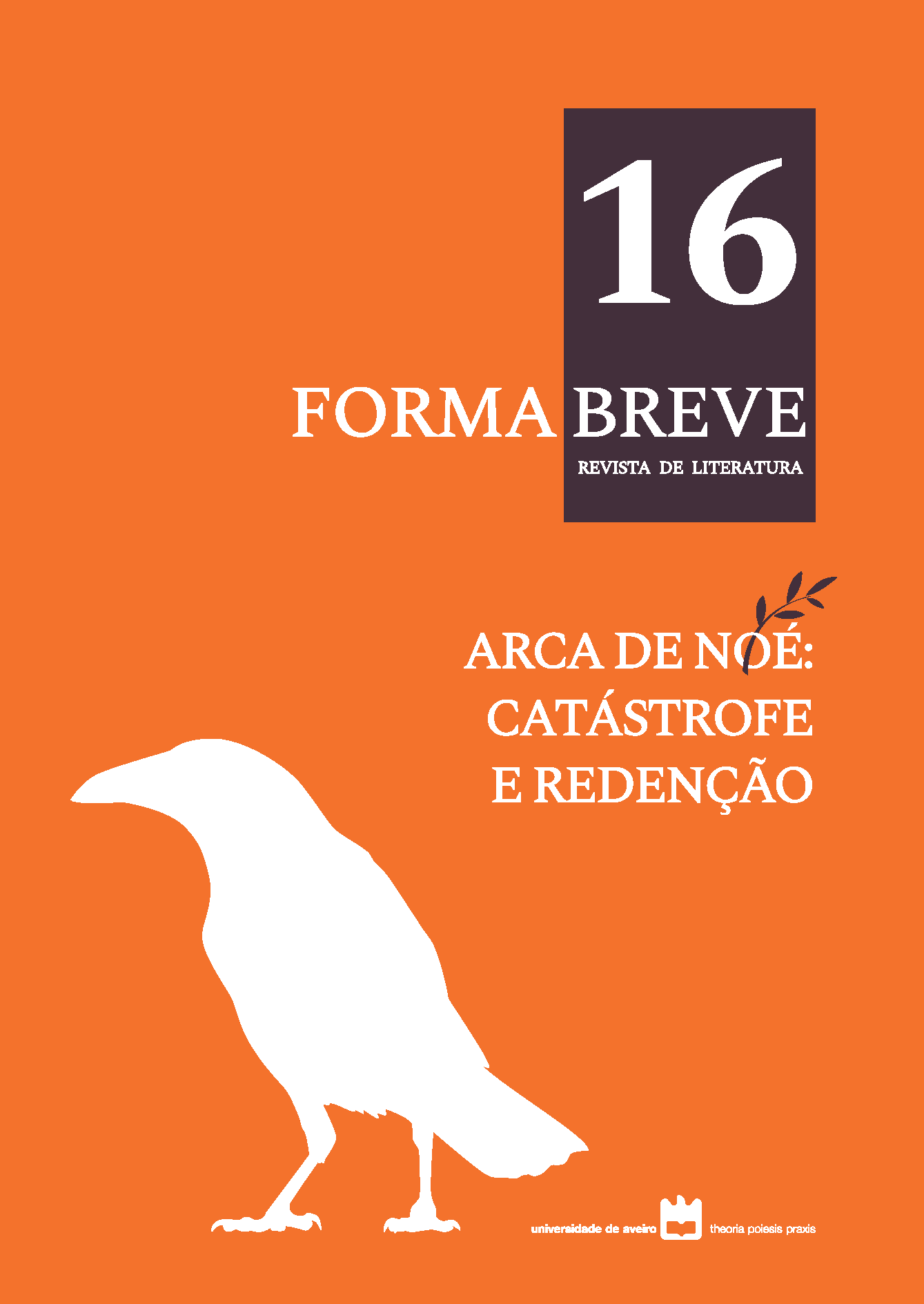The story of Nūḥ (Noé) in aljamiado-morisco texts
Abstract
Within the aljamiada literature of the Moriscos the story of Nūḥ (Noah) is shown in two very different versions which constitute different phenomena of religious syncretism. The Alhadiz (‘story’) in prose, surpasses the value of being a mere translation by referring to an unknown ḥadiṯ in Arabic heir of various traditions favorable to Shiism, linked to the city of Kufa (Iraq) and closely linked to interpretations arising in Christian Syriac and Jewish media during the two first centuries of Islam. The second one is the song in verse of Muhammad Rabadán, composed shortly before 1603, which here is shown as the result of its Hispanic Catholic and humanistic context, in symbiosis with the Muslim tradition.
Downloads
References
Al-Kisā’ī. (1922). Qiṣaṣ al-Anbiyā’. (Ex codibus qui in Monaco, Bonna, Lugd. Batav., Lipsia et Gothana asservantur. Edidit Isaac Eisenberg). Leiden: Brill.
Al-Ṭabarī, Muḥammad ibn Ǧarīr ibn Yazīd. (1964). Tārīh̲ al-rusul wa-l-mulūk. Leyden: E. J. Brill.
Aṯ-Ṯacalabī, Abū Isḥāq (1878). Qiṣaṣ al-Anbiyā’, ‘Arā’is al-Mağālis. Bandr Manba’ (Irán): Maktabat al-Ḥaydarī.
Basset, R. (1926). Mille et un contes. Recits et légendes arabes. T. 3: Légendes religieuses. Paris: Librairie Orientale et Américaine – Maisonneuve Frères.
Bezold, C. (1883). Die Schatzlhöhle, aus dem syrischen texte. Leipzig: J. C. Hinrichs’sche Buchhandlung.
Bonhome Pulido, L. (2016). La recepción del relato del diluvio universal en fuentes siriacas y árabes. Córdoba: Servicio de Publicaciones de la Universidad de Córdoba.
Boumehd Tomasi, T. (2012). Una miscelánea aljamiada narrativa y doctrinal: edición y estudio del manuscrito Junta 57 del CSIC Madrid. Zaragoza: Institución Fernando el Católico.
Brinner, W. M. (2003). Noah. In J. D. McAuliffe (Ed.), Encyclopaedia of the Qurʾān (pp. 540-543). Leiden-Boston: Brill.
Castillo, C. (1991-1992). El Arca de Noé en las fuentes árabes. Miscelánea de Estudios Árabes y Hebraicos, 40-41, 67-78.
David Zuwiyya, Z. (2017). El morisco Mohamed Rabadán y su Discurso de la luz: cómo el humanismo se convirtió en instrumento de salvación del pueblo morisco. eHumanista, 36, 304 327.
Debié, M. (2015). Noé dans la tradition syriaque. Une mer de symboles.
Fernández, M.ª J. (1987). Libro de los Castigos (Ms. aljamiado nº 8 de la Biblioteca de la Junta. Edición, introducción, estudio lingüístico, glosario y notas), Oviedo: Universidad de Oviedo [Tesis doctoral].
Gibson, M. Dunlop. (1901). Apocrypha Arabica: 1. Kitab Al Magall, or The Book of The Rolls. 2. The story of Aphikia 3. Cyprian and Justa, in arabic 4. Cyprian and Justa, in greek. London– Cambridge: University Press Warehouse – C. J. Clay and Sons.
Jeffery, A. (1938). The foreign vocabulary of the Qurʾan. Baroda (India): Oriental Institute.
Lasarte, J. A. (1991). Poemas de Mohamad Rabadán (Canto de las lunas – Día del Juicio – Discurso de la Luz – Los nombres de Dios). Zaragoza: Diputación General de Aragón).
Luxenberg, Christoph (2007). The Syro-Aramaic Reading of the Koran. A Contribution to the Decoding of the Language of the Koran. Berlín: Hans Schiler,
Monferrer Sala, J. P. (2001). Mēmrā del Pseudo Metodio y Yōnṭōn, el cuarto hijo de Noé. Notas a propósito de un posible origen de la leyenda oriental llegada a Hispania en el s. VII. Miscelánea de estudios árabes y hebraicos. Sección Arabe-Islam, 50, 213-230.
Monferrer Sala, J. P. (2004). An Arabic-Muslim quotation of a Biblical text: Ibn Kathīr’s al-Bidāya wa-l-Nihāya and the construction of the Ark of the Covenant. In R. Ebied y H. Teule (Eds.), Studies on the Christian Arabic Heritage in Honour of Father Prof. Dr. Samir Khalil Samir S.I. at the occasion of his sixty-fifth birthday (pp. 263-278, espec. 272-275). Lovaina-París-Dudley: Peeters.
Pascual Asensi, J. (2008). Y tenía della un fijo que le decían Palayṭūn. Un caso de masīḥiyya en un relato de tradición aljamiado-morisco (Ms. Junta 8, fols. 73r-81r). Anaquel de Estudios Árabes, 19, 159-174.
Ri, S.-M. (1987). La Caverne des Trésors, les deux recensions syriaques, éditées par. Lovaina: Peeters (col. «Corpus Scriptorum Chirstianorum Orientalium» 486, Scriptores Syri 207).
Ribera, J. & Asín, M. (1912). Manuscritos árabes y aljamiados de la Biblioteca de la Junta. Madrid: Junta para Ampliación de Estudios e Investigaciones Científicas.
Segovia, C. A. (2015). The Quranic Noah and the Making of the Islamic Prophet. A Study of Intertextuality and Religious Identity Formation in Late Antiquity). Berlin: De Gruyter (Judaism, Christianity, and Islam—Tension, Transmission, Transformation 4).
Stanley, H. E. J. (1868-1870-1871-1873). The Poetry of Muhammad Rabadán. The Journal of the Royal Asiatic Society, III, pp. 81-104 y 379-413; IV, pp. 138-17; V, pp. 119-140 y 303-337; y VI, pp. 165-212. [También como publicación unitaria en Hertford: Stephen Austin & sons, s.d.].

This work is licensed under a Creative Commons Attribution 4.0 International License.

